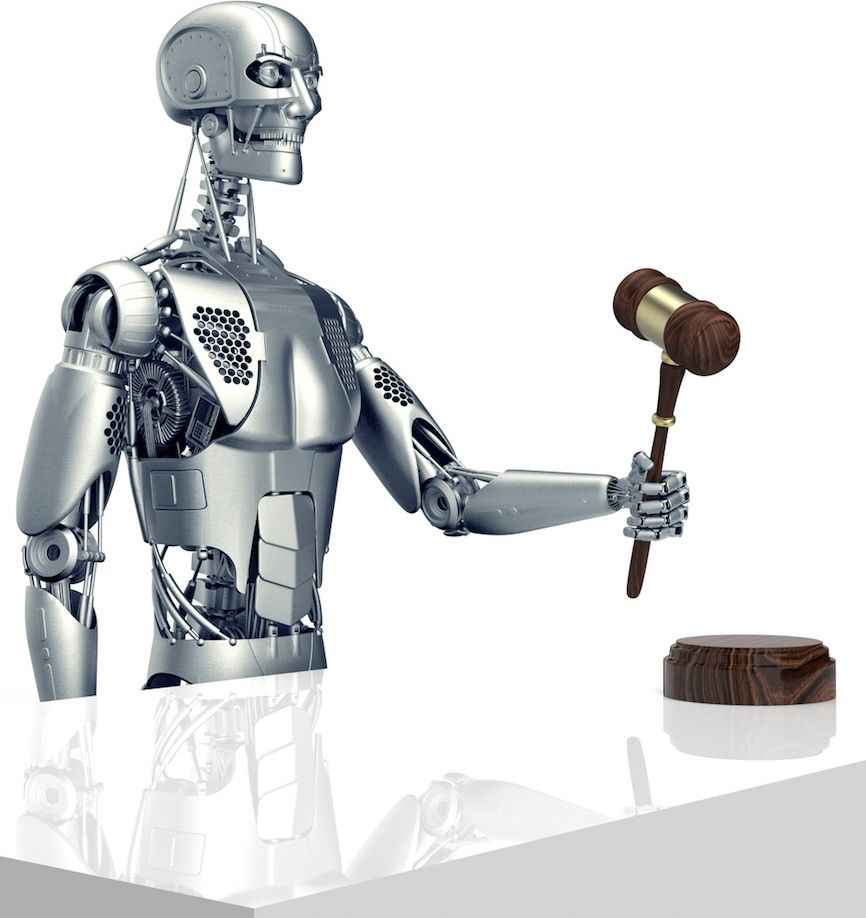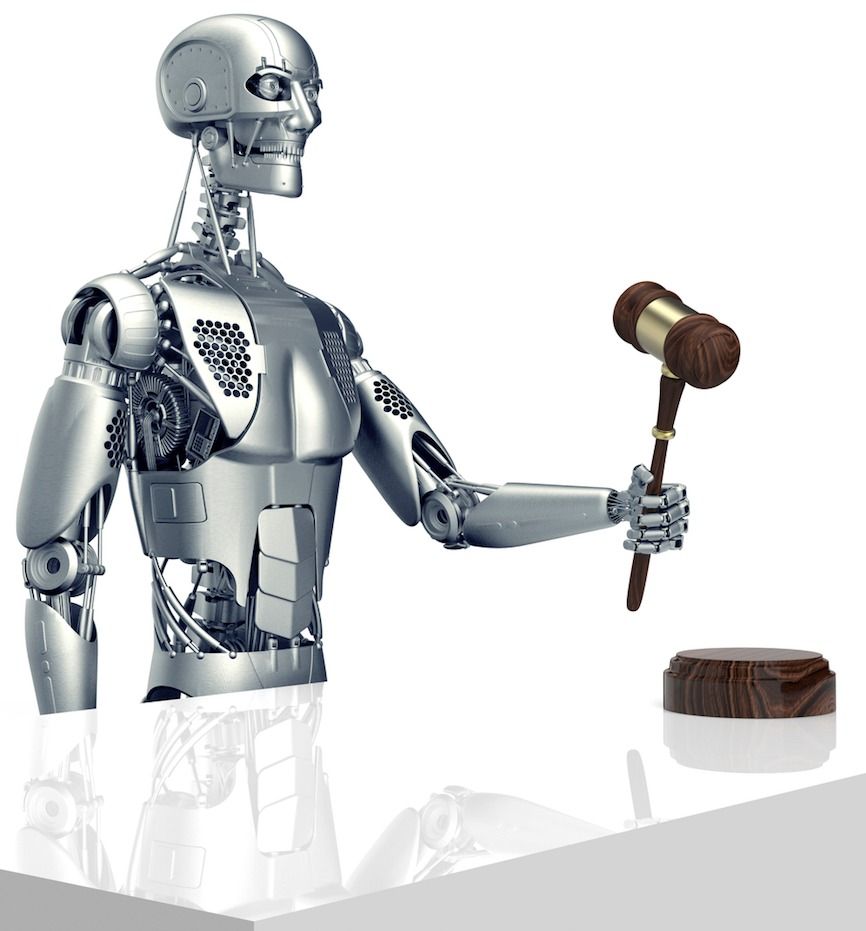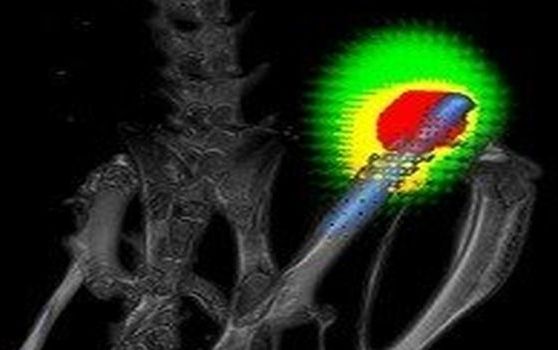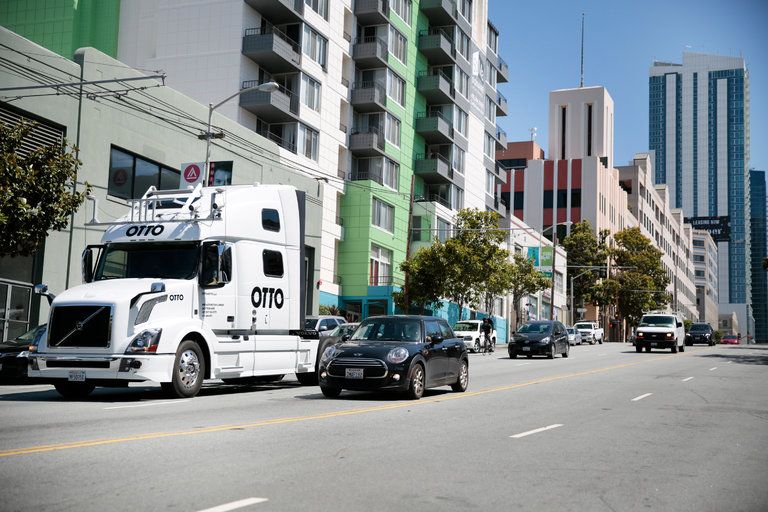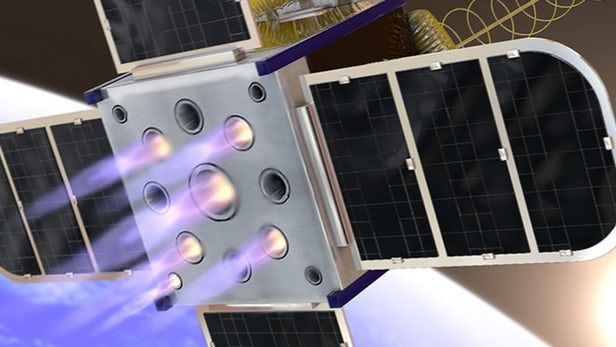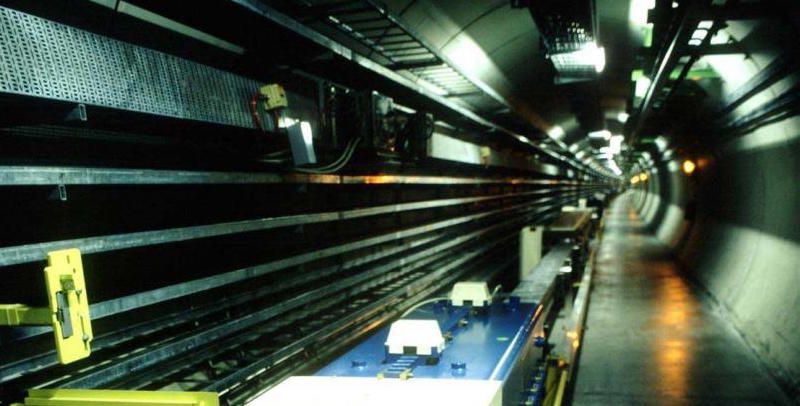An artificial intelligence method developed by University College London computer scientists and associates has predicted the judicial decisions of the European Court of Human Rights (ECtHR) with 79% accuracy, according to a paper published today (Monday, Oct. 24) in PeerJ Computer Science.
The method is the first to predict the outcomes of a major international court by automatically analyzing case text using a machine-learning algorithm.*.
A titanium implant (blue) without a nanofiber coating in the femur of a mouse. Bacteria are shown in red and responding immune cells in yellow. Courtesy of Lloyd Miller/Johns Hopkins Medicine
In a proof-of-concept study with mice, scientists at The Johns Hopkins University show that a novel coating they made with antibiotic-releasing nanofibers has the potential to better prevent at least some serious bacterial infections related to total joint replacement surgery. A report on the study, published online the week of Oct. 24 in Proceedings of the National Academy of Sciences, was conducted on the rodents’ knee joints, but, the researchers say, the technology would have “broad applicability” in the use of orthopedic prostheses, such as hip and knee total joint replacements, as well pacemakers, stents and other implantable medical devices. In contrast to other coatings in development, the researchers report the new material can release multiple antibiotics in a strategically timed way for an optimal effect.
“We can potentially coat any metallic implant that we put into patients, from prosthetic joints, rods, screws and plates to pacemakers, implantable defibrillators and dental hardware,” says co-senior study author Lloyd S. Miller, MD, PhD, an associate professor of dermatology and orthopedic surgery at the Johns Hopkins University School of Medicine.
SAN FRANCISCO — The futurists of Silicon Valley may not have seen this one coming: The first commercial delivery made by a self-driving truck was 2,000 cases of Budweiser beer.
On Tuesday, Otto, the Uber-owned self-driving vehicle operation, announced the completion of its first commercial delivery, having delivered its beer load from Fort Collins, Colo., to Colorado Springs, a roughly 120-mile trip on Interstate 25.
In recent years, Uber has predicted a future in which you can ride in a self-driving car that will take you where you want to go, no driver necessary. But the idea that commercial trucking could be done by robot is a relatively new idea — and a potentially controversial one, given the possibility that robots could one day replace human drivers.
Wall Street watchdogs turn to AI: System can scan markets and even chat rooms for rogue traders…
Artificial intelligence programs have beaten chess masters and TV quiz show champions. Next up: stock market cheats.
Two exchange operators have announced plans to launch artificial intelligence tools for market surveillance in the coming months and officials at a Wall Street regulator tell Reuters they are not far behind.
Executives are hoping computers with humanoid wit can help mere mortals catch misbehavior more quickly.
Today I’m announcing a $100M commitment to Kernel in an effort to enhance human intelligence and reimagine our future. Unlocking our brain is the most significant and consequential opportunity in history — and it’s time sensitive.
We’re starting to identify the mechanisms underlying neural code and make them programmable. Our biology and genetics have become increasingly programmable; our neural code is next in line. Programming our neural code will enable us to author ourselves and our existence in ways that were previously unimaginable.
I started Kernel in 2016 (read more at the Washington Post) to build the world’s first neural prosthetic for human intelligence enhancement. The investment I’m making in Kernel today will expedite the development of this prosthetic and similarly transformative neurotechnologies.
Rubik’s-cube-sized CubeSats are a nifty, cheap way for scientists to put a research vessel into space, but they’re limited to orbiting where they’re launched – until now. Los Alamos researchers have created and tested a safe and innovative rocket motor concept that could soon see CubeSats zooming around space and even steering themselves back to Earth when they’re finished their mission.
Consisting of modules measuring 10 × 10 × 11.35 cm (3.9 × 3.9 × 4.5 in), these mini-satellites first launched in 2003, but are currently lacking in propulsion because they’re designed to hitch a ride into space with larger, more expensive space missions. They’re usually deployed along with routine pressurized cargo launches, usually into low orbits that limit the kinds of studies that CubeSats can perform.
This limitation is, of course, frustrating for space researchers. In fact, the National Academy of Science recently identified propulsion as one of the main areas of technology that needs to be developed for CubeSats.

